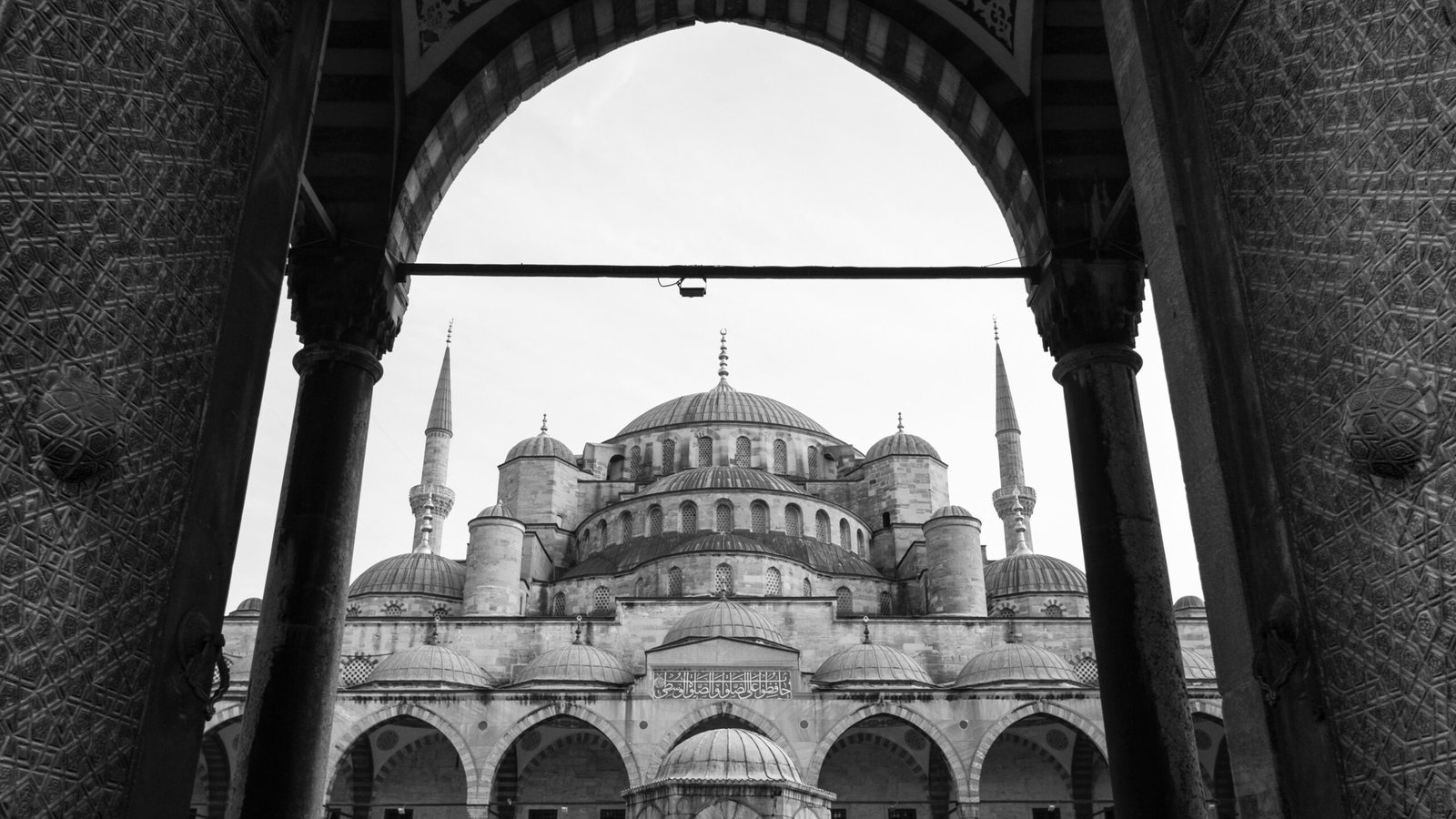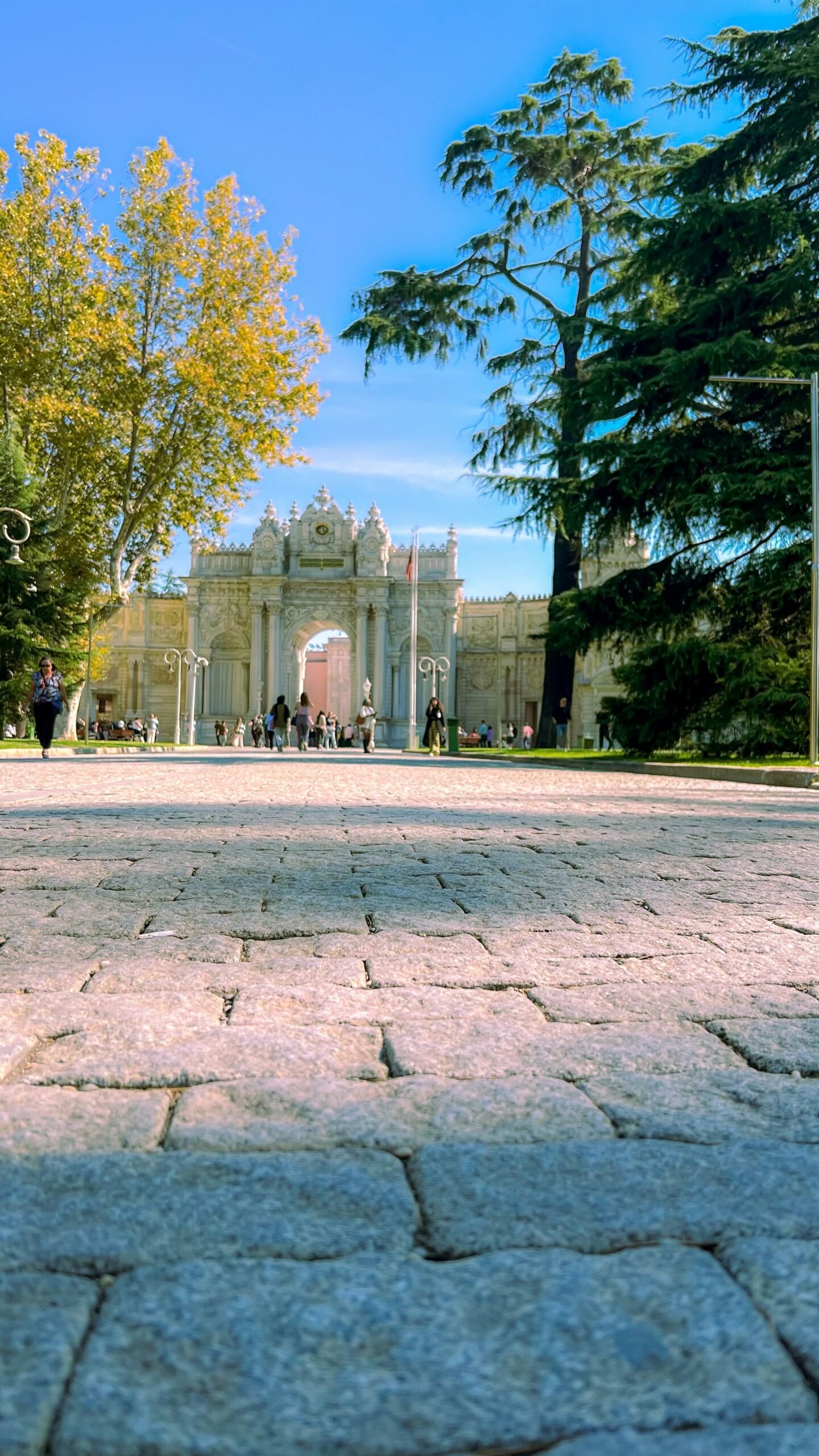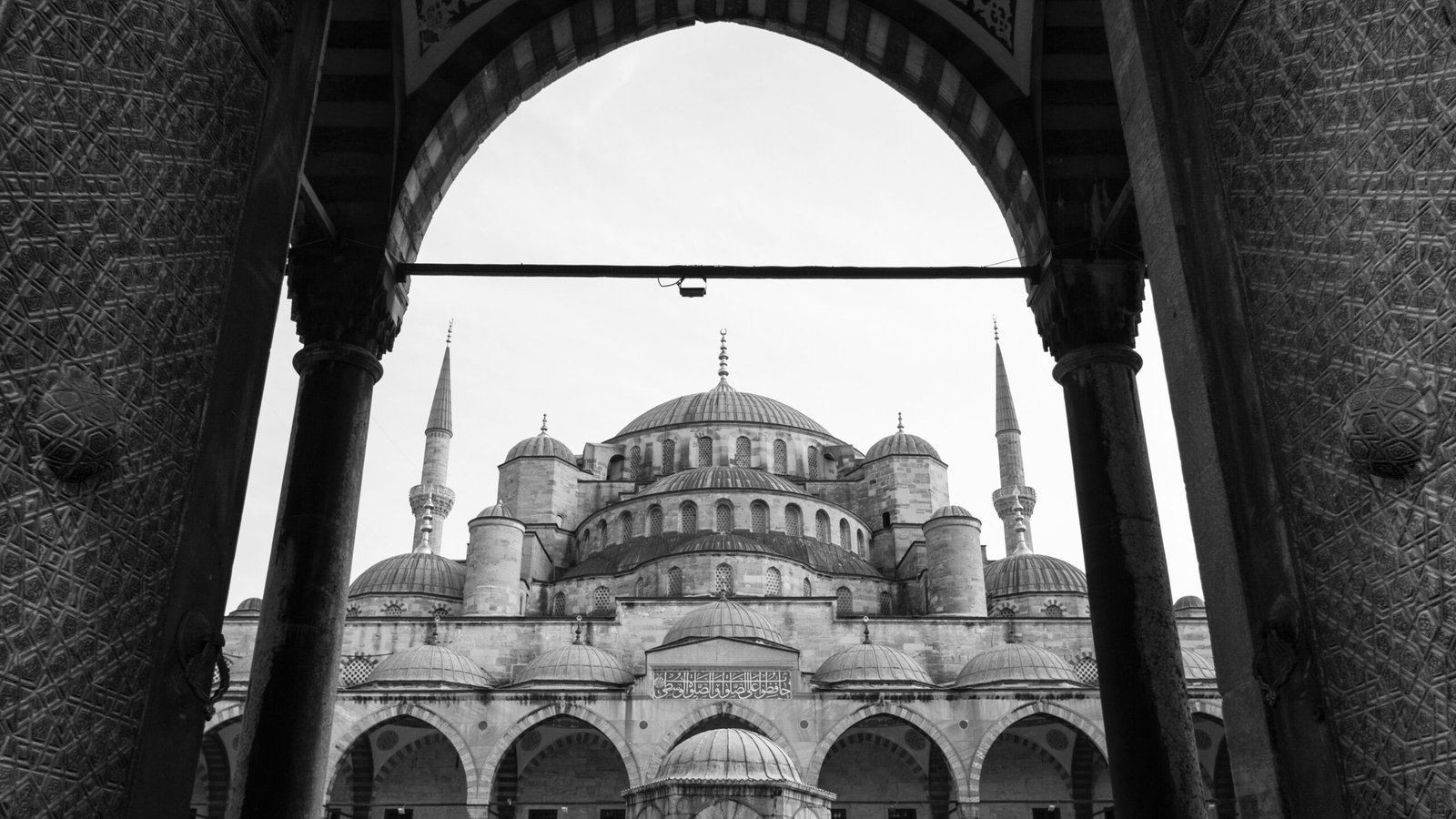Introduction to Istanbul
Istanbul, a city that gracefully bridges two continents, stands as a testament to centuries of history and cultural amalgamation. As the former capital of the Roman, Byzantine, and Ottoman Empires, Istanbul boasts a legacy that few cities can rival. Its unique geographical position, straddling both Europe and Asia, has made it a melting pot of cultures, religions, and traditions, enriching its vibrant metropolitan life.
The city’s historical significance is evident in its myriad landmarks and ancient architecture. From the towering Hagia Sophia, once a grand cathedral and later a mosque, to the opulent Topkapi Palace, the seat of Ottoman sultans, Istanbul’s heritage is palpable in every corner. The majestic Blue Mosque, with its iconic domes and minarets, and the ancient Basilica Cistern, an underground marvel, further underscore the city’s architectural splendor.
Istanbul’s cultural diversity is mirrored in its bustling bazaars, diverse culinary scene, and lively arts landscape. The Grand Bazaar, one of the oldest and largest covered markets in the world, offers a sensory overload of colors, scents, and sounds, while the Spice Bazaar entices with exotic flavors and aromas. The city’s culinary offerings, ranging from traditional Turkish delights to contemporary fusion cuisine, reflect its rich cultural tapestry.
Beyond its historical and cultural attractions, Istanbul is a modern, dynamic metropolis. Its skyline, dotted with a mix of historic and contemporary structures, signifies a city that harmoniously blends the old with the new. The Bosphorus Strait, bisecting the city, provides not only stunning vistas but also a vital waterway connecting the Black Sea to the Sea of Marmara.
In essence, Istanbul is a city of contrasts and coexistence, where history and modernity, tradition and innovation, East and West come together to create a unique and enchanting destination. This multifaceted metropolis invites visitors to explore its many layers, offering an unforgettable journey through time and culture.
Hagia Sophia
The Hagia Sophia stands as one of Istanbul’s most illustrious landmarks, embodying the city’s rich historical and cultural tapestry. Originally constructed in 537 AD under the direction of Byzantine Emperor Justinian I, this architectural marvel initially served as a cathedral for the Eastern Orthodox Church. Its significance was further cemented when it became the world’s largest cathedral for nearly a thousand years. The Hagia Sophia’s transformation did not end there; following the Ottoman conquest in 1453, it was converted into a mosque by Sultan Mehmed II, marking a new chapter in its storied existence. Today, it functions as a museum, welcoming millions of visitors annually who come to admire its grandeur and historical significance.
One of the Hagia Sophia’s most captivating features is its massive dome, which appears to float effortlessly above the central nave. This ingenious design, achieved through a complex system of pendentives and hidden supports, has inspired countless architects and engineers over the centuries. The dome, measuring 31 meters in diameter and soaring 56 meters above the ground, is an engineering marvel of the ancient world. Its ethereal quality is further enhanced by the streams of natural light that filter through the forty windows encircling its base, creating an almost otherworldly ambiance within the vast interior.
The interior of the Hagia Sophia is equally mesmerizing, adorned with intricate mosaics that depict religious scenes and figures. These mosaics, which date back to the Byzantine era, are masterpieces of artistry and craftsmanship. Although many were plastered over during its conversion into a mosque, extensive restoration efforts have revealed their original splendor. The juxtaposition of Christian iconography with Islamic calligraphy, added during the Ottoman period, underscores the Hagia Sophia’s unique role as a symbol of Istanbul’s religious and cultural evolution.
The Hagia Sophia’s ability to transcend its original purpose and adapt to different religious contexts speaks volumes about its enduring significance. As a testament to both Byzantine and Ottoman architectural ingenuity, it remains a poignant symbol of Istanbul’s diverse heritage and a must-visit attraction for anyone seeking to understand the city’s complex history.
Topkapi Palace
Topkapi Palace, a symbol of the grandeur of the Ottoman Empire, served as the primary residence of Ottoman sultans for over four centuries. Situated on the Seraglio Point overlooking the Bosphorus, this majestic palace offers a glimpse into the opulence and grandeur of a bygone era. Visitors are often captivated by its architectural splendor, sprawling courtyards, and extensive gardens, which provide a serene retreat from the bustling city of Istanbul.
One of the most intriguing sections of Topkapi Palace is the Harem. This secluded area, once the private quarters of the sultan and his family, reveals the intricate lives and hierarchical structures within the palace walls. The Harem is adorned with exquisite Iznik tiles, lavishly decorated rooms, and stunning domes, all of which reflect the artistic achievements of the Ottoman era.
The Imperial Treasury, another highlight of the palace, houses a priceless collection of jewels, thrones, and other artifacts that showcase the immense wealth of the empire. Among the treasures, the Topkapi Dagger and the Spoonmaker’s Diamond are particularly noteworthy, drawing visitors from around the world eager to witness these legendary items.
Additionally, the Sacred Relics Room holds a collection of religious artifacts, including items believed to belong to the Prophet Muhammad. These relics, along with the palace’s rich history, make Topkapi a significant cultural and religious site.
The palace’s location provides breathtaking views over the Bosphorus Strait, offering a panoramic vista that is both inspiring and serene. The lush gardens of Topkapi Palace, with their meticulously maintained greenery and tranquil fountains, add to the overall allure, making it a perfect spot for reflection and relaxation.
Topkapi Palace stands as a testament to the architectural prowess and artistic heritage of the Ottoman Empire. Its blend of history, culture, and natural beauty makes it a must-visit destination for anyone exploring the enchanting city of Istanbul.
The Blue Mosque (Sultan Ahmed Mosque)
The Blue Mosque, officially known as the Sultan Ahmed Mosque, stands as a quintessential symbol of Istanbul’s rich historical tapestry. Renowned worldwide for its mesmerizing blue tiles that adorn the mosque’s interior, this architectural marvel captivates visitors with its grandeur and intricate design. Constructed between 1609 and 1616 during the rule of Sultan Ahmed I, the mosque embodies a harmonious blend of Ottoman and Byzantine architectural influences.
One of the most striking features of the Blue Mosque is its six minarets, a number that was unprecedented at the time of its construction. This unique characteristic initially caused controversy, as it matched the number of minarets at the Kaaba in Mecca. The issue was diplomatically resolved by adding a seventh minaret to the Kaaba, thus preserving the mosque’s distinctive feature.
The mosque’s grand courtyard, nearly as large as the mosque itself, serves as a welcoming prelude to the architectural splendor within. The courtyard is encircled by a continuous arcade, providing a serene space for both worshippers and visitors. The central fountain, used for ablutions, adds to the tranquil ambiance of this sacred space.
Upon entering the mosque, one is immediately struck by the intricate interior design. The walls are adorned with over 20,000 handmade ceramic tiles, predominantly in shades of blue, which give the mosque its popular name. The tiles, crafted in Iznik, feature an array of floral and geometric patterns, contributing to the mosque’s ethereal beauty. Complementing the tiles are more than 200 stained glass windows, which filter natural light into the vast prayer hall, creating a kaleidoscope of colors that dance across the floor.
Despite its status as a major tourist attraction, the Blue Mosque remains an active place of worship. Visitors are reminded to respect the sanctity of the mosque, particularly during the five daily prayer times when the mosque is closed to tourists. This dual role as a place of devotion and a historical monument underscores the Blue Mosque’s significance in Istanbul’s cultural and spiritual landscape.
Grand Bazaar
The Grand Bazaar, situated in the heart of Istanbul, stands as one of the largest and oldest covered markets globally, with its origins tracing back to the 15th century. This bustling marketplace, known locally as Kapalıçarşı, sprawls over 30,000 square meters and houses more than 4,000 shops. Its labyrinthine layout can be both mesmerizing and bewildering, making it an essential stop for any visitor seeking an authentic experience.
Wandering through the Grand Bazaar, one can discover an astonishing variety of goods. From the aromatic spices and richly textured textiles to exquisite jewelry and intricate antiques, the market caters to diverse tastes and interests. Each alleyway and corridor reveals new treasures, offering a sensory overload of colors, scents, and sounds. The spice stalls are particularly captivating, with their vibrant displays of saffron, sumac, and other exotic seasonings, while the textiles section boasts an array of handwoven carpets and delicate fabrics.
Jewelry enthusiasts will find themselves drawn to the glittering showcases of gold, silver, and precious gemstones, many of which are crafted with traditional Ottoman designs. Additionally, the antiques shops present a fascinating glimpse into the past, featuring vintage artifacts, coins, and rare collectibles that tell stories of bygone eras. Whether you’re seeking a unique souvenir or an opulent piece of history, the Grand Bazaar has something for everyone.
To navigate this vast market effectively, a few tips can be invaluable. Firstly, haggling is not only customary but expected; it is an art form that can lead to rewarding interactions with the local vendors. Approach negotiations with a friendly demeanor and a willingness to engage in the back-and-forth banter. Secondly, it’s advisable to visit early in the day to avoid the heaviest crowds and to give yourself ample time to explore without feeling rushed. Lastly, while the market can be overwhelming, taking a map or using a GPS-enabled device can help you keep track of your location and ensure you don’t miss any must-see sections.
One of the quintessential experiences when visiting Istanbul is embarking on a Bosphorus cruise. This maritime journey provides a unique perspective of the city, blending its rich history and modern vibrancy seamlessly along the shoreline. As the vessel glides through the strait, passengers are treated to an unparalleled view of some of Istanbul’s most iconic landmarks.
Among the prominent sights that grace the Bosphorus are the majestic Dolmabahçe Palace and the formidable Rumeli Fortress. The Dolmabahçe Palace, with its opulent architecture, stands as a testament to the grandeur of the Ottoman Empire. Its detailed façade and lush gardens are best appreciated from the water, offering a panoramic view that is simply mesmerizing. Further along, the Rumeli Fortress, built by Sultan Mehmed II in 1452, looms large over the narrowest point of the Bosphorus, showcasing the strategic military prowess of the Ottomans.
The cruise also meanders past an array of picturesque waterfront mansions, known locally as ‘yalis’. These elegant residences, with their charming balconies and vibrant facades, epitomize the blend of traditional and contemporary lifestyles in Istanbul. The sight of these mansions, juxtaposed against the backdrop of the bustling city, encapsulates the unique cultural harmony that defines Istanbul.
Visitors have a variety of options when it comes to experiencing the Bosphorus cruise. Short tours, typically lasting around two hours, offer a quick yet comprehensive glimpse of the key attractions. These tours are ideal for those with limited time but still wanting to capture the essence of the Bosphorus. For those seeking a more immersive experience, full-day trips are available, often incorporating stops at notable sites along the way, allowing for a deeper exploration of the historical and cultural landmarks.
Whether opting for a brief tour or a full-day adventure, a Bosphorus cruise is an unforgettable experience that provides a unique window into the heart of Istanbul, blending its storied past with its dynamic present in a way that few other experiences can match.
Basilica Cistern
The Basilica Cistern, known as Yerebatan Sarnıcı in Turkish, stands as one of Istanbul’s most enigmatic and atmospheric landmarks. This ancient underground water reservoir dates back to the 6th century during the reign of Emperor Justinian I. Serving as a crucial water filtration system for the Byzantine capital, the cistern provided an essential supply of water to the Great Palace of Constantinople and later to the Topkapi Palace during the Ottoman era.
Architecturally, the Basilica Cistern is a marvel of engineering and design. It spans an impressive area of approximately 9,800 square meters, capable of holding up to 80,000 cubic meters of water. Visitors are often struck by the sight of 336 marble columns arranged in 12 rows, each standing at a height of 9 meters. These columns were repurposed from older Roman structures, showcasing a variety of styles, including Ionic and Corinthian. The cistern’s ceiling features intricate brick vaulting, a testament to the advanced construction techniques of the time.
Adding to the allure of the Basilica Cistern are the two enigmatic Medusa heads that serve as column bases in the northwest corner. Shrouded in mystery, these heads are believed to have been brought to the cistern as spoils from earlier Roman ruins. One head is positioned upside down while the other is tilted sideways, a configuration that has sparked numerous theories and legends. Some suggest that the Medusa heads were placed in this manner to negate their supposed power, while others believe it was a practical measure to fit the columns.
In its prime, the Basilica Cistern was a vital element of Istanbul’s water supply system, ingeniously designed to store and filter water from the Belgrade Forest via aqueducts. Today, it stands as a captivating historical site, offering visitors a glimpse into the advanced engineering and rich history of ancient Istanbul. The serene, dimly lit environment, accompanied by the sound of dripping water, creates an otherworldly experience, making the Basilica Cistern a must-visit attraction for anyone exploring the city.
Conclusion and Travel Tips
Istanbul, a city that straddles two continents, offers an unparalleled blend of history, culture, and modernity. From the awe-inspiring architecture of the Hagia Sophia and the Blue Mosque to the bustling bazaars like the Grand Bazaar and Spice Bazaar, every corner of Istanbul tells a story. The rich tapestry of Byzantine, Ottoman, and modern Turkish influences makes it a must-visit destination for any traveler.
The best time to visit Istanbul is during the spring (April to June) and autumn (September to November) when the weather is mild and the tourist crowds are smaller. A stay of at least four to five days is recommended to fully immerse yourself in the city’s splendor and explore its main attractions without feeling rushed. Using public transportation, such as trams, buses, and ferries, is both efficient and cost-effective for navigating the city. Istanbulkart, a reloadable travel card, can be used on all types of public transport, making it a convenient option for tourists.
As you wander through Istanbul, be sure to savor the local cuisine. Indulge in traditional dishes like kebabs, mezes, and the famous Turkish delight. Don’t miss out on trying simit, a sesame-crusted bread, or sipping on a cup of Turkish tea or coffee at a local café. For a more immersive experience, consider dining at a traditional Turkish restaurant where you can enjoy a full-course meal accompanied by live music and performances.
Istanbul’s diverse and historical charm awaits every traveler. Whether you’re drawn by its ancient ruins, vibrant markets, or exquisite culinary delights, the city promises an unforgettable journey through time and culture. So, pack your bags and embark on an adventure to explore the enchanting tourist attractions in Istanbul for a truly enriching experience.









